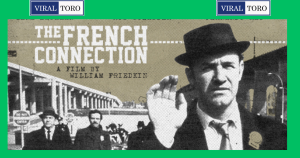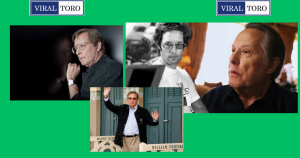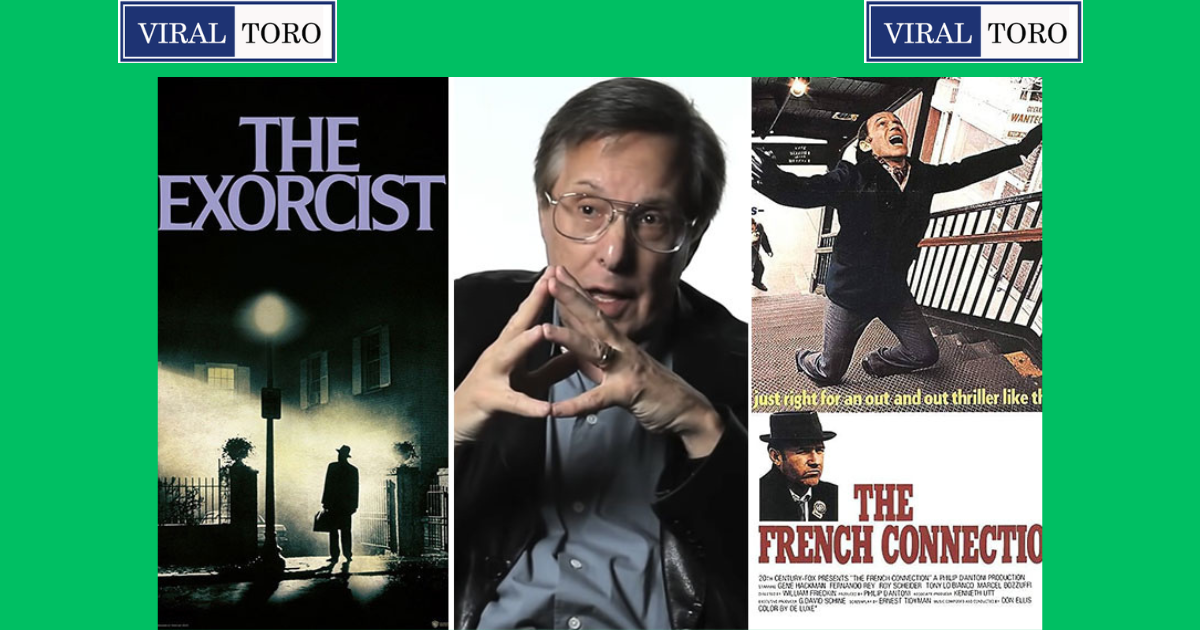William Friedkin: 87 Years of Cinematic Brilliance
Cinematic Icon: Honoring 87 Years of William Friedkin’s Creative Brilliance
In the annals of cinematic history, few names stand as tall as that of William Friedkin. An auteur known for his bold storytelling, innovative techniques, and captivating narratives, William Friedkin has left an indelible mark on the world of cinema. As we celebrate 87 years of his genius, this article takes a deep dive into his remarkable journey, exploring his groundbreaking works, his impact on American cinema, and his enduring legacy.
Early Beginnings: William Friedkin was born on August 29, 1935, in Chicago, Illinois. His early exposure to the arts and his fascination with film ignited a passion that would shape his life’s trajectory. Influenced by the films of directors like Howard Hawks and John Ford, Friedkin developed an affinity for storytelling that combined gritty realism with cinematic spectacle.
Breakthrough with “The French Connection”: William Friedkin breakthrough came in 1971 with “The French Connection.” This gritty and suspenseful crime thriller not only garnered critical acclaim but also secured five Academy Awards, including Best Director. The film’s iconic car chase scene through the streets of New York remains a benchmark of cinematic excellence to this day. William Friedkin dedication to authenticity and his ability to create tension on-screen showcased his directorial prowess.
The Horror Masterstroke “The Exorcist”: Following “The French Connection,” William Friedkin stunned audiences with “The Exorcist” in 1973. A groundbreaking horror film that transcended its genre, it became a cultural phenomenon. The film’s intense atmosphere, coupled with Friedkin’s meticulous attention to detail, pushed the boundaries of horror and raised the bar for cinematic storytelling.
Risk-taking and Innovation: Throughout his career, William Friedkin demonstrated a willingness to take risks and experiment with different genres. His 1977 thriller “Sorcerer” showcased his determination to create a suspenseful narrative, combining elements of adventure and psychological tension. This fearless approach to storytelling endeared him to audiences and solidified his status as a maverick filmmaker.

Legacy and Influence: Wlliam Friedkin‘s influence on American cinema is immeasurable. His innovative use of sound, editing, and visual effects set new standards for filmmakers to aspire to. Directors such as Quentin Tarantino, Martin Scorsese, and David Fincher have cited William Friedkin as a source of inspiration, acknowledging his impact on their own work.
William Friedkin‘s later works, including “To Live and Die in L.A.” (1985), “The Hunted” (2003), and “Killer Joe” (2011), continued to showcase his unique perspective and storytelling flair. Each film, while distinct in genre, retained Friedkin’s signature elements of suspense, authenticity, and intricate character development.
As we celebrate 87 years of William Friedkin‘s genius, his contributions to the world of cinema remain timeless. From his breakthroughs with “The French Connection” and “The Exorcist” to his ongoing legacy of innovation, Friedkin’s cinematic journey has left an indelible mark on the landscape of filmmaking. His commitment to pushing boundaries, telling compelling stories, and capturing the essence of human experience continues to inspire both aspiring filmmakers and seasoned auteurs. As we reflect on his remarkable career, we are reminded that true genius, like Friedkin’s, knows no boundaries and transcends the limits of time and space.

Unveiling the Captivating Story The Ascendance of The French Connection
In the shade of history, certain stories stand out as witching and influential, weaving themselves into the fabric of a nation’s knowledge. Among these, the saga of The French Connection emerges as a tale that bedazzled the United States during the 1960s and 1970s, leaving an unforgettable mark on both law enforcement sweats and the artistic geography. Origins of The French Connection The French Connection’s roots claw deep into the world of lawless medicine trade.
The tumultuous 1960s set the stage for the rise of a felonious network that would ever change the dynamics of anesthetics dealing. Connecting the poppy fields of Turkey to the covert labs of Marseille and eventually to the bustling thoroughfares of New York City, this network eased the inflow of heroin, bearing a sprawling and largely profitable felonious enterprise. The Pursuit of Justice As the tendrils of The French Connection spread, law enforcement agencies embarked on a inexhaustible hunt to strike the syndicate. The response was the creation of technical task forces, most specially the Joint Drug Enforcement Team comprised of civil agents. Employing scrupulous surveillance, undercover operations, and transnational collaboration, these agents pursued the syndicate with unvarying determination.
The outgrowth was a series of dramatic medicine busts that would come fabulous in the annals of crime- fighting history. Eternalized on Screen The French Connection’s appeal extended beyond the realm of felonious exertion, chancing its place in cinematic history. In 1971, director William Friedkin restated the true narrative onto the tableware screen, aptly naming the film after the felonious miracle. Gene Hackman’s depiction of the gritty and grim operative, Jimmy” Popeye” Doyle, brought to life the high- stakes pursuit of medicine merchandisers against the background of a gritty New York City.

The film’s heart- pounding auto chase sequence remains an iconic cinematic moment, etched in the recollections of moviegoers. Enduring Impact The French Connection’s heritage resounded through American society, impacting both law enforcement tactics and public perception of the medicine trade. The saga’s exposure of the transnational medicine trafficking network urged significant changes in medicine enforcement programs, cooperation between global law enforcement agencies, and the strengthening of technical task forces devoted to combatting systematized crime.
The French Connection is not just a literal narrative; it’s an immersing saga that continues to reverberate with the United States. From its origins in the underbelly of the medicine trade to its immortalization on the tableware screen, The French Connection’s story encapsulates the grim pursuit of justice and the profound influence of felonious enterprises on society. As its heritage persists, the saga serves as a poignant memorial of the unyielding hunt for justice and the intricate interplay between law enforcement, crime, and culture.
Unveiling the Story Behind an Unfading heritage How One Remarkable Individual Readdressed History
In the realm of moviemaking, there are luminaries whose cultural benefactions remain etched in the annals of history. This composition pays homage to the exceptional trip of one similar iconic figure, William Friedkin, whose managerial brilliance reshaped the cinematic geography. From his groundbreaking flicks like” The French Connection” to the nipping masterpiece” The Exorcist,” Friedkin’s heritage endures, witching cult in the United States and around the world. Early onsets and Cultural Awakening Born in( motherland) in( time of birth), William Friedkin‘s cultural inclinations manifested at an early age.
As he navigated the tumultuous waters of( literal environment), his passion for liar and cinematic expression began to take root. These constructive times laid the foundation for his unborn part as a pioneering director. Trailblazing managerial Achievements Friedkin’s rise to elevation was characterized by a series of groundbreaking achievements that revolutionized the film assiduity. His managerial prowess reached its meridian with( notable accomplishment 1), a cinematic masterpiece that not only garnered critical sun but also set new norms for liar and moviemaking ways. His posterior workshop, including( notable accomplishment 2), continued to push boundaries, earning him a character as a visionary regisseur .

Impact on Cinematic History Friedkin’s unforgettable impact on cinematic history extended far beyond the tableware screen. With his unequaled liar wit and amenability to attack unconventional themes, he brought a fresh and raw literalism to the cinematic experience.” The Exorcist,” a horror classic, not only alarmed cult but also readdressed the kidney, setting a standard for cerebral intensity and liar depth that’s still deified moment.
Enduring Influence and Legacy As William Friedkin celebrated his 87th birthday, his heritage remains as vibrant as ever. His flicks continue to inspire filmmakers, actors, and cinephiles likewise, reminding them of the transformative power of liar. The trip from his early days to getting a cinematic luminary encapsulates the American dream of pushing boundaries and realizing creative bournes . A Cultural Touchstone Friedkin’s flicks did not simply entertain; they came artistic marks, sparking conversations and shaping societal perspectives. His audacious approach to moviemaking challenged conventions and encouraged dialogue on matters of morality, fear, and mortal nature. His work reverberated deeply with cult in the United States, landing the substance of the period and reflecting the collaborative psyche.

As we celebrate the life and achievements of William Friedkin, we flash back not only the flicks he created but also the impact he left on the cinematic world. His liar prowess and intrepid disquisition of mortal feelings elevated him to the pantheon of fabulous directors. Friedkin’s heritage is a testament to the enduring power of art to allure, provoke, and inspire. As we look back on his remarkable trip, we’re reminded that his unfading heritage will continue to review cinematic history for generations to come.


